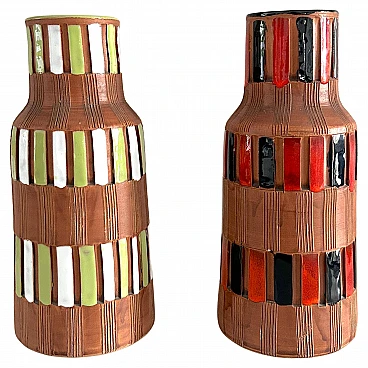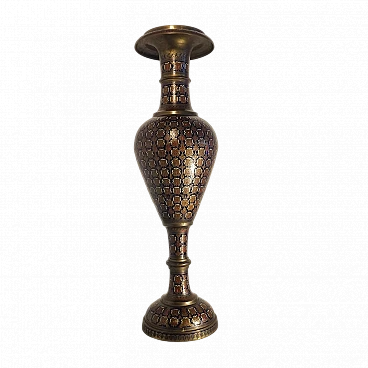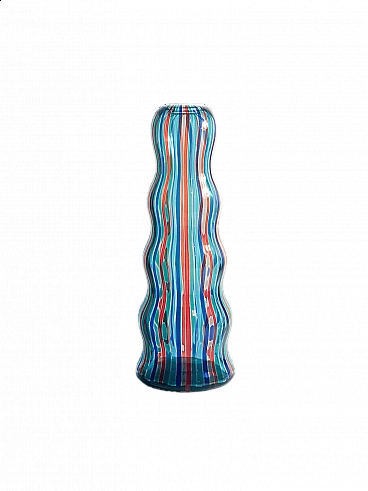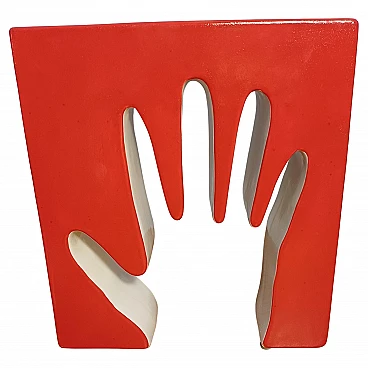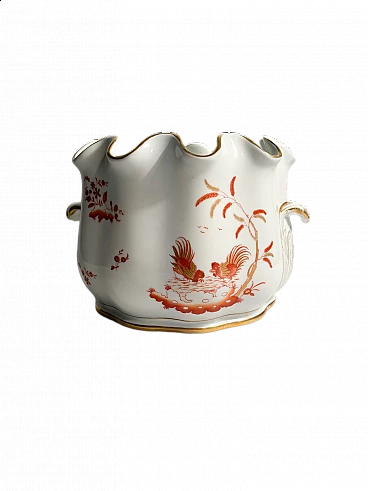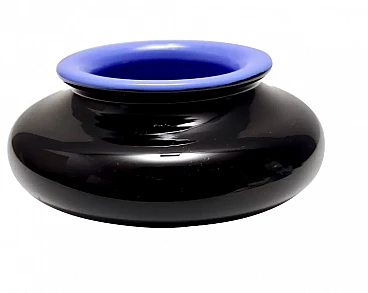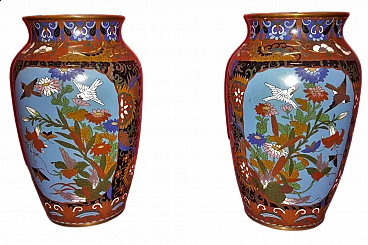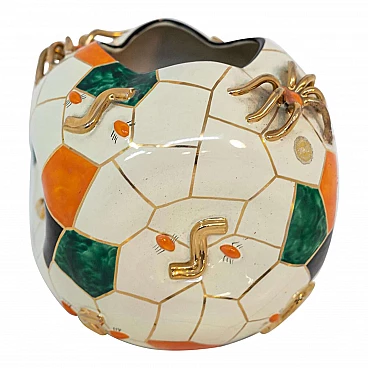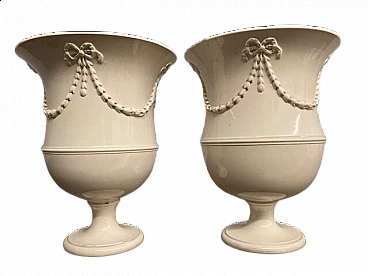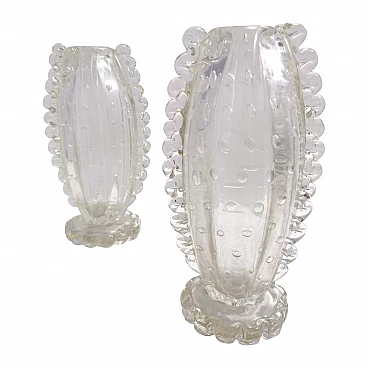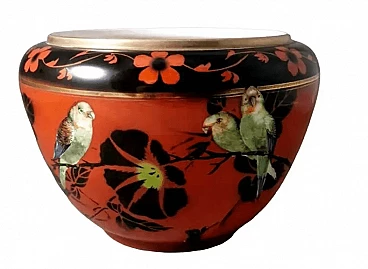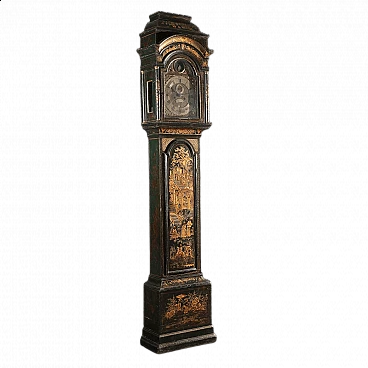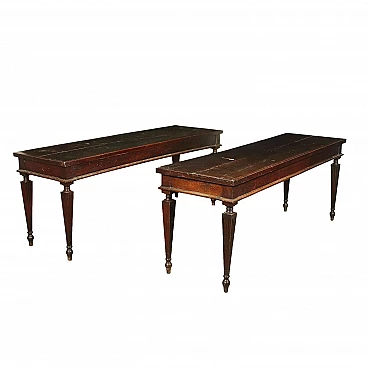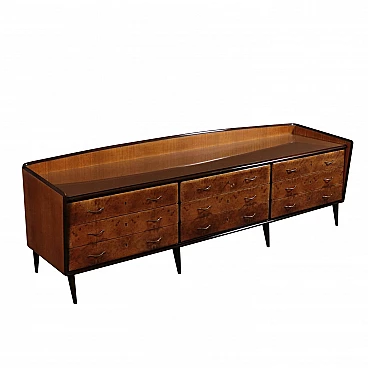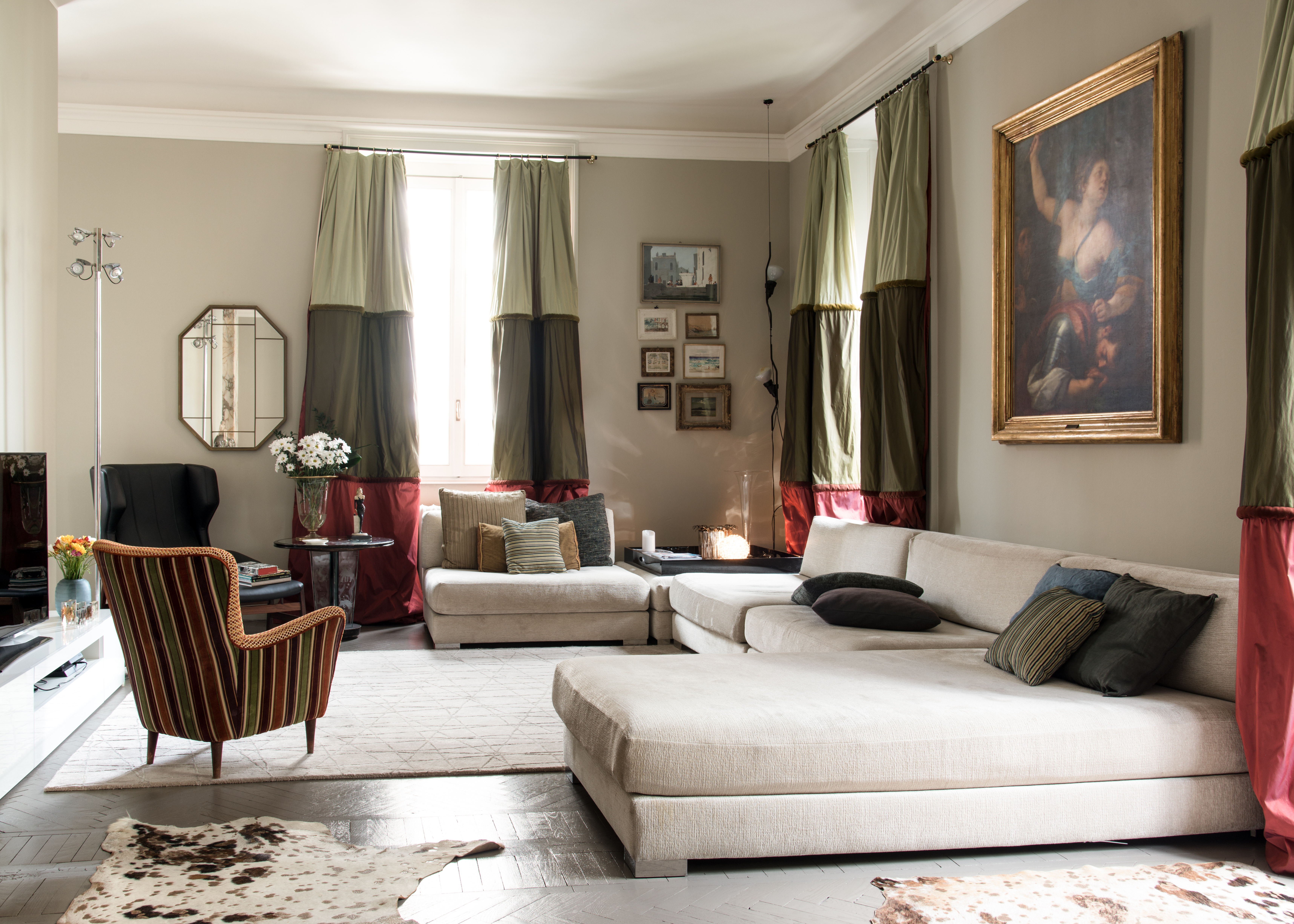Precious baluster vase in Chinese porcelain. It was handcrafted from kaolin clay. On the sides of the funnel neck it has two handles modeled in cobalt blue; on the right handle the cobalt color did not adhere well during firing and the underlying clay is visible. The baluster is an architectural element in the shape of a small column with a generically shaped shaft which is arranged in rows along the stairs to form the balustrade which supports the handrail; there are objects that are compared to a balustrade due to their pronounced shape, such as a vase or a part of a piece of furniture. On the front of the vase, peony flowers, branches and leaves were painted with rare skill. The design, done entirely by hand, is very detailed and the convex shape of the vase helps to give it a soft and pleasant movement. The back, however, is devoid of decorations. On the upper edge there is the classic red wax seal, which was affixed as a mark of authenticity and guarantee of origin on objects of artistic or historical value; the seal contains Chinese characters indicating the manufacturer's name and the year of manufacture, unfortunately on our seal these characters are illegible. The vase was made in China during the Qing Dynasty (1644-1911); carefully examining the vase, its shape, the craftsmanship and the execution of the designs leads us to say that it was made in the last years of the dynasty, that is, between 1898 and 1900. The Qing dynasty was the last Chinese dynasty and its fall in 1912 at the hands of the Xinhai Revolution marked the end of China's two-thousand-year imperial history and the birth of modern China. However, we must say that Chinese porcelain craftsmanship reached the peak of its development during the Qing dynasty, with more than 100,000 artisans in the sector; porcelains from this era include "blue and white", wuacai, "sky blue", sunsacaiect. Despite the era, the techniques used to make the vases are the same as those used for artisanal production during the Qing dynasty and even in the modern era, owning Chinese porcelain was a source of great pride for the Chinese people and the rest of the world. Our vase, with the contrast between blue and white that characterizes it and its slender shape so elegant and full of charm, can be considered a true work of art. The Peony flower (Mudan Hua) is one of the most important flowers of Chinese culture, to the point that during the Qing dynasty (1644 - 1912) it was proclaimed the national flower. For thousands of years it has been among the most revered in the East as a bringer of luck and happy marriages. Showy, lush and elegant, it embodies love and affection, prosperity, honor, value, nobility of soul and, in full bloom, peace. Sweetly scented and long lasting, called "rose without thorns" by Europeans, a symbol of romance, it is often used in weddings, in fact the Peony celebrates its 12th wedding anniversary. The vase is in good condition: on the body there are small rust inclusions due to the iron present in the clay (it takes up to 100 years for this effect to occur!); on the lower edge there is another firing defect, normal things for handcrafted objects.
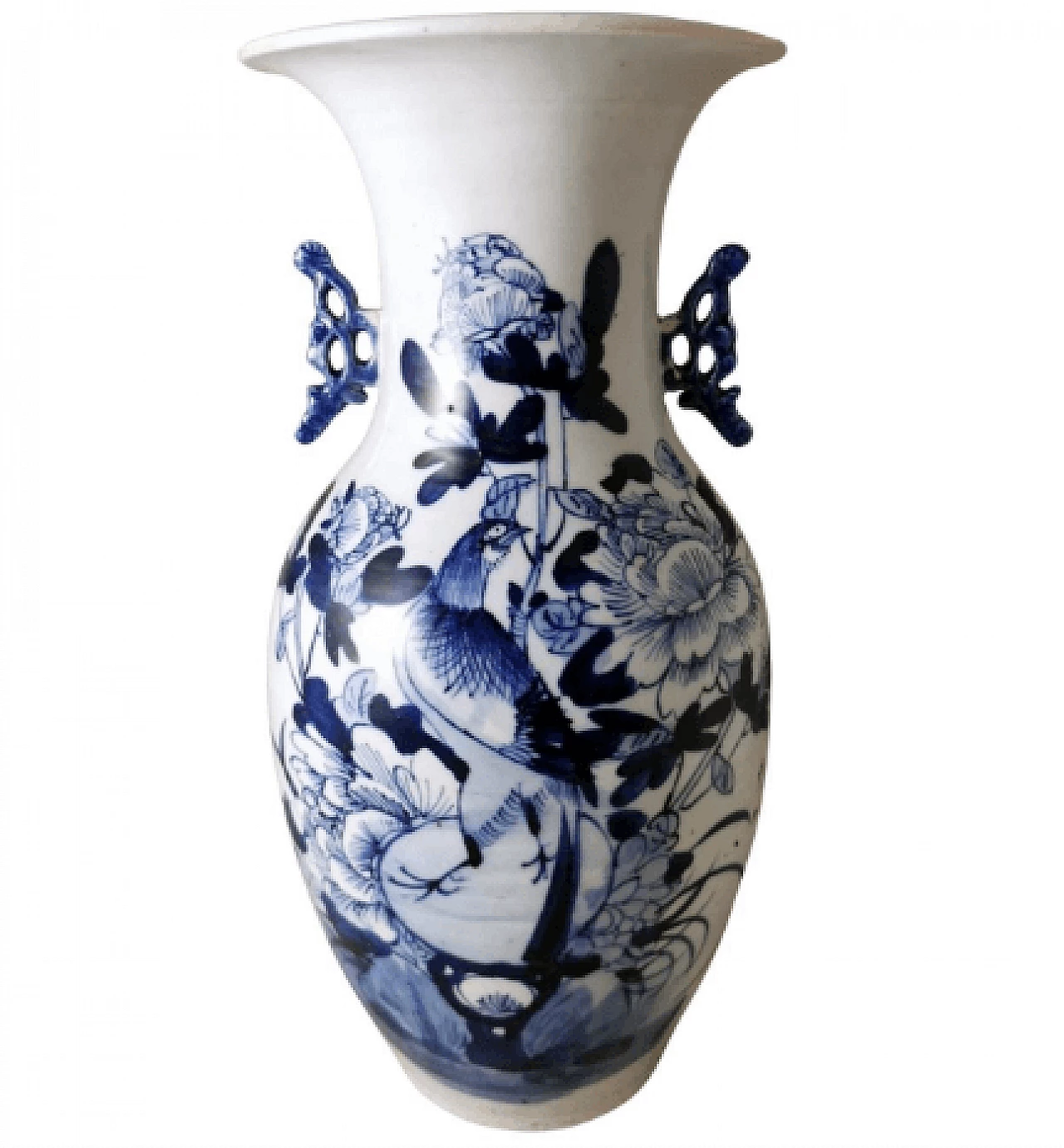
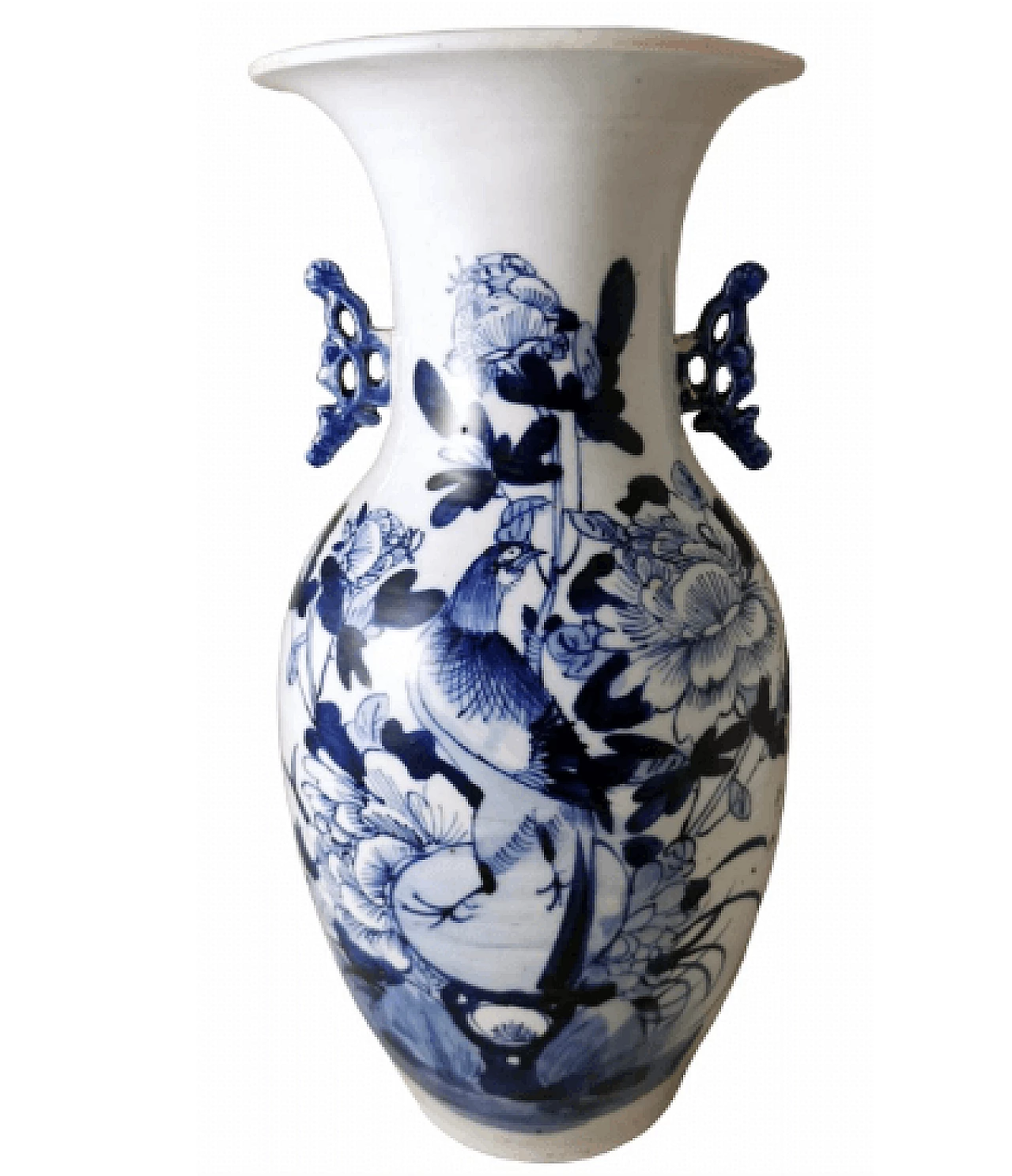
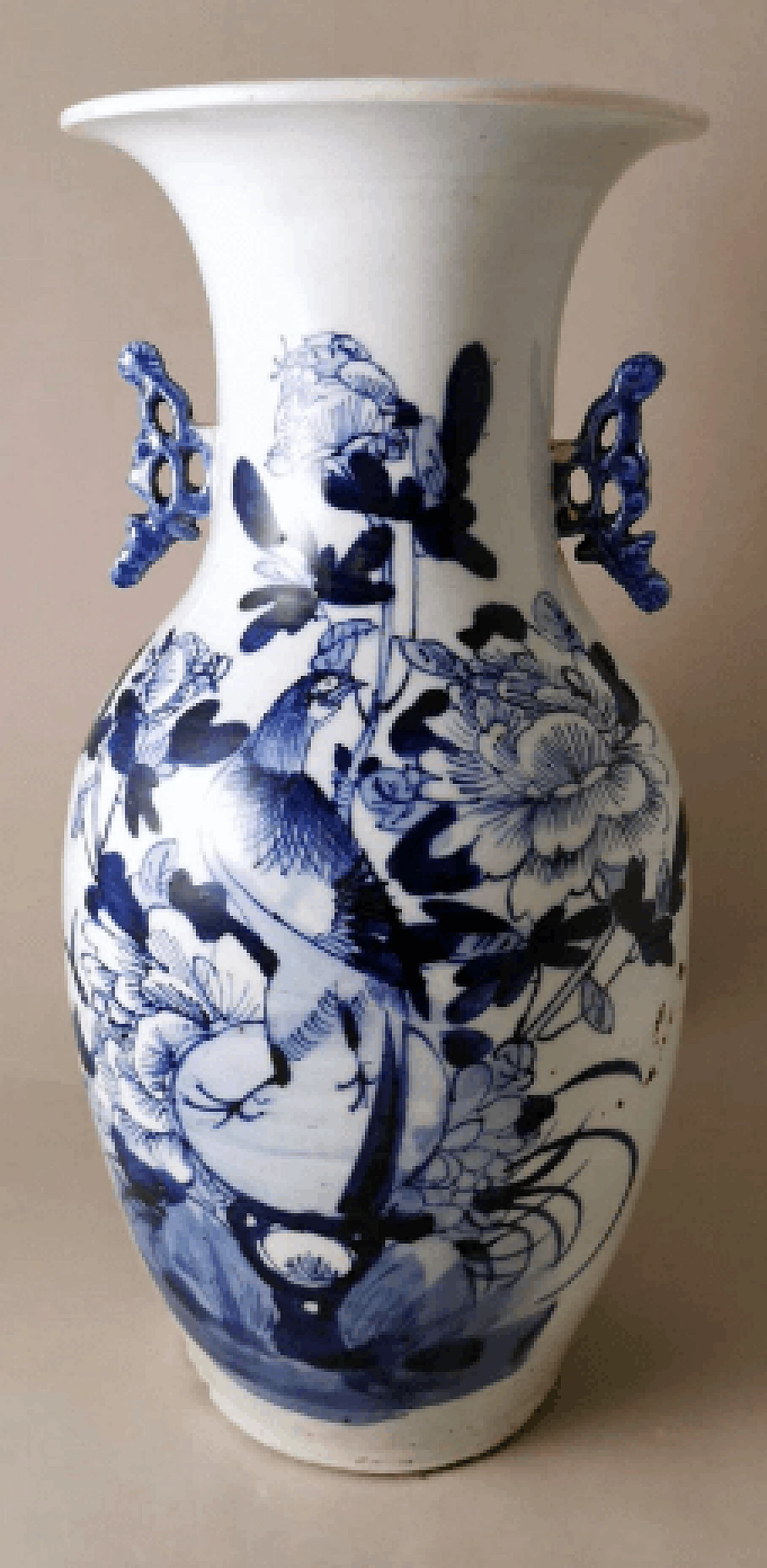
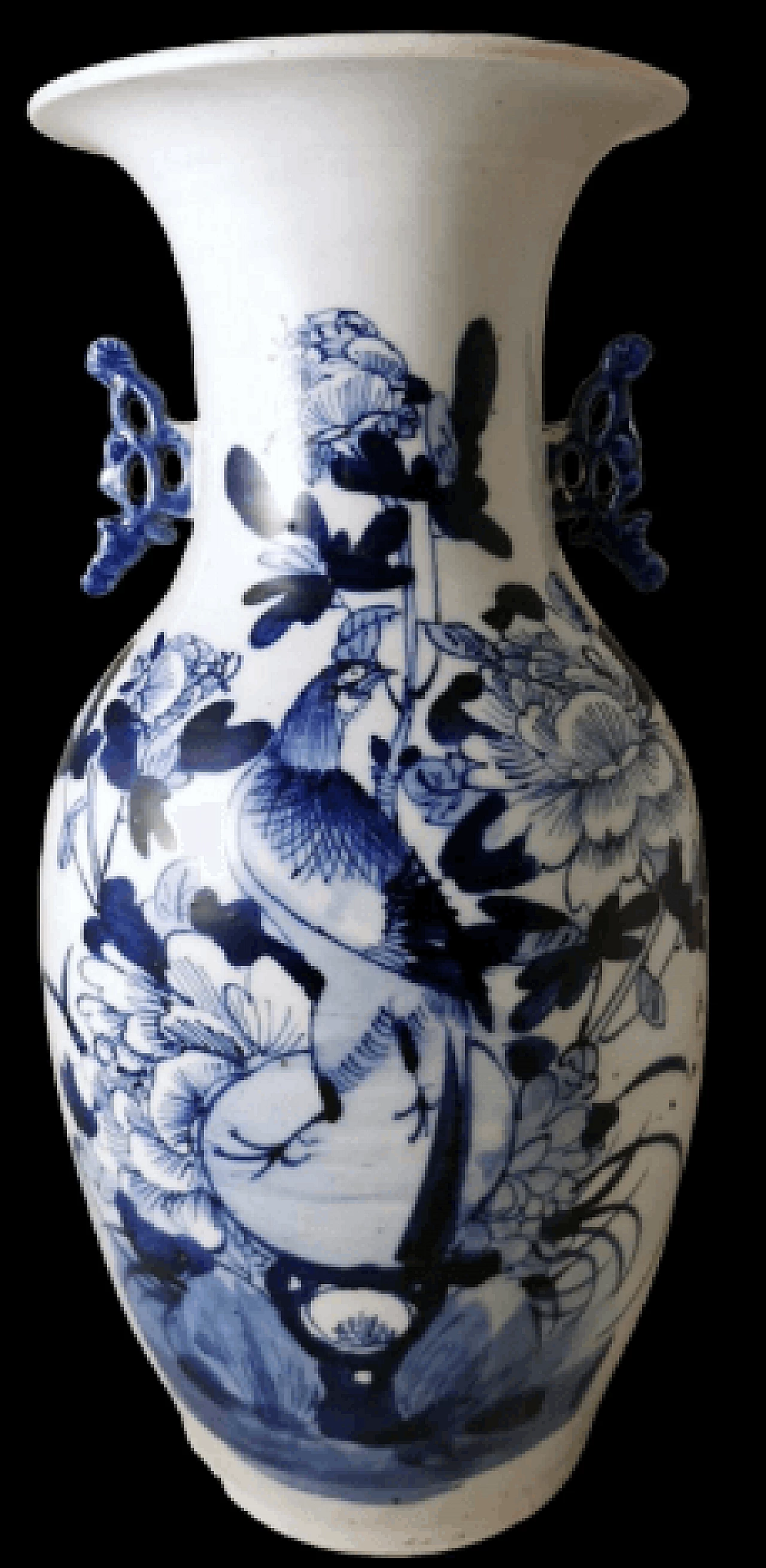
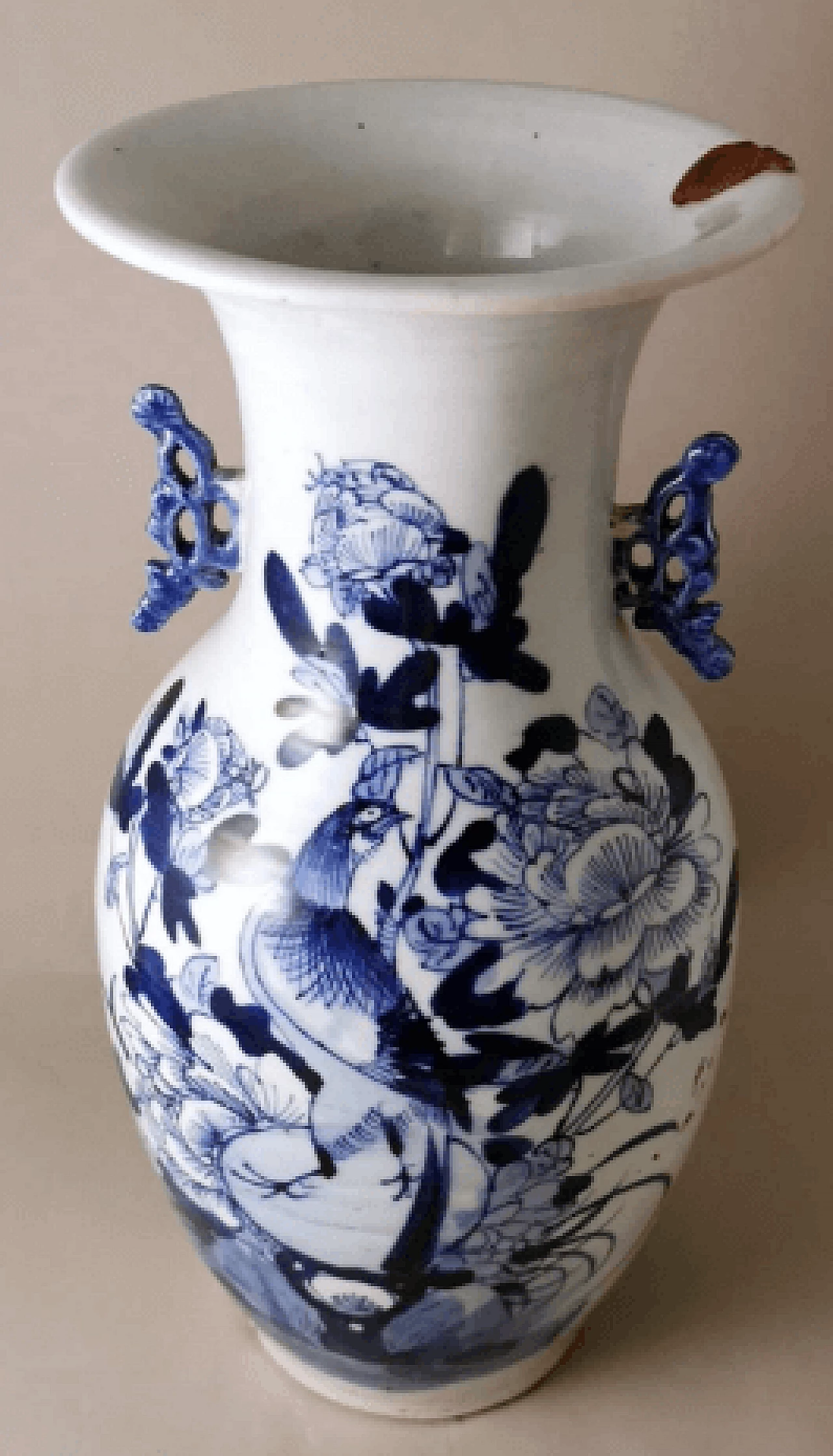
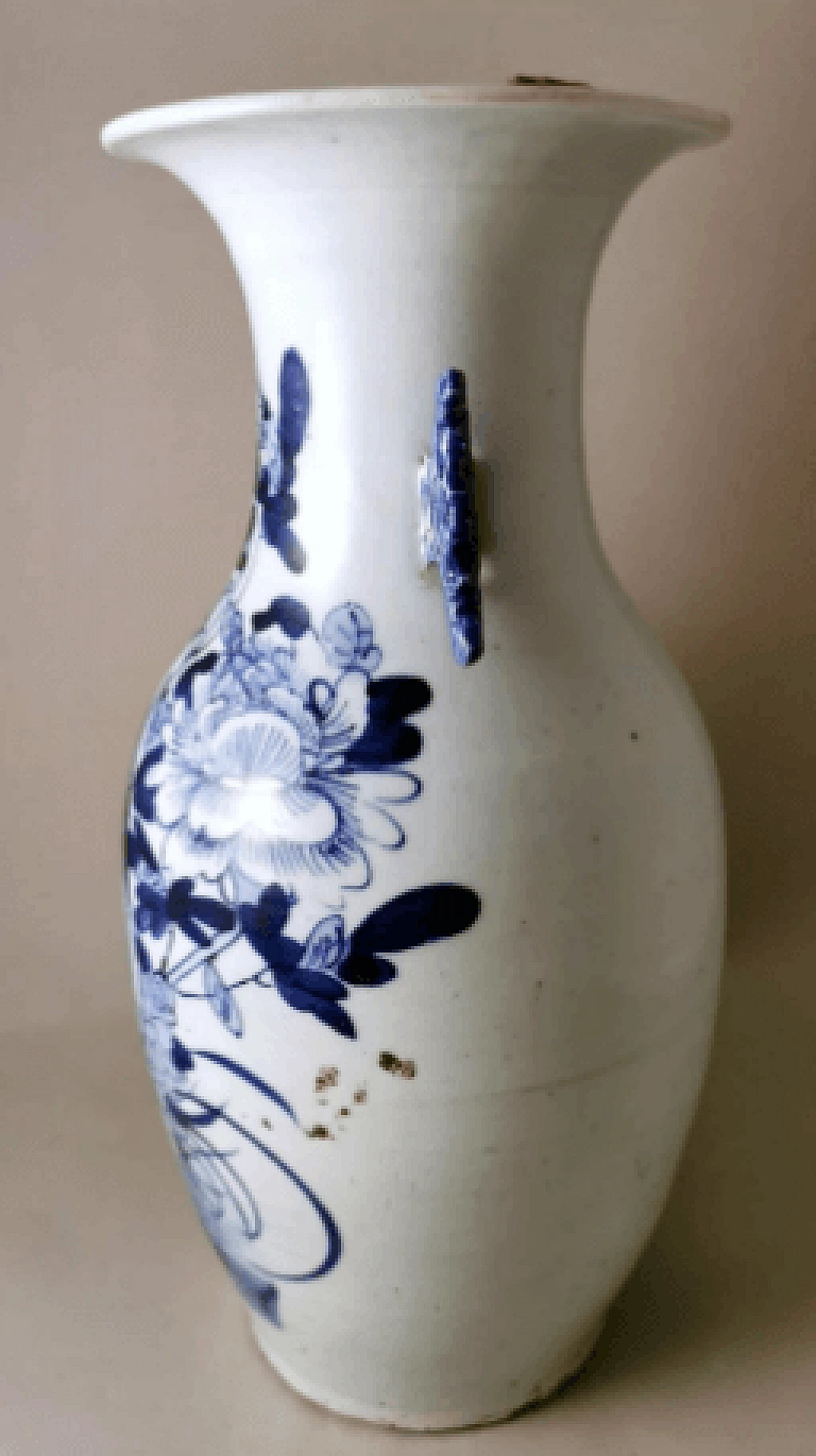
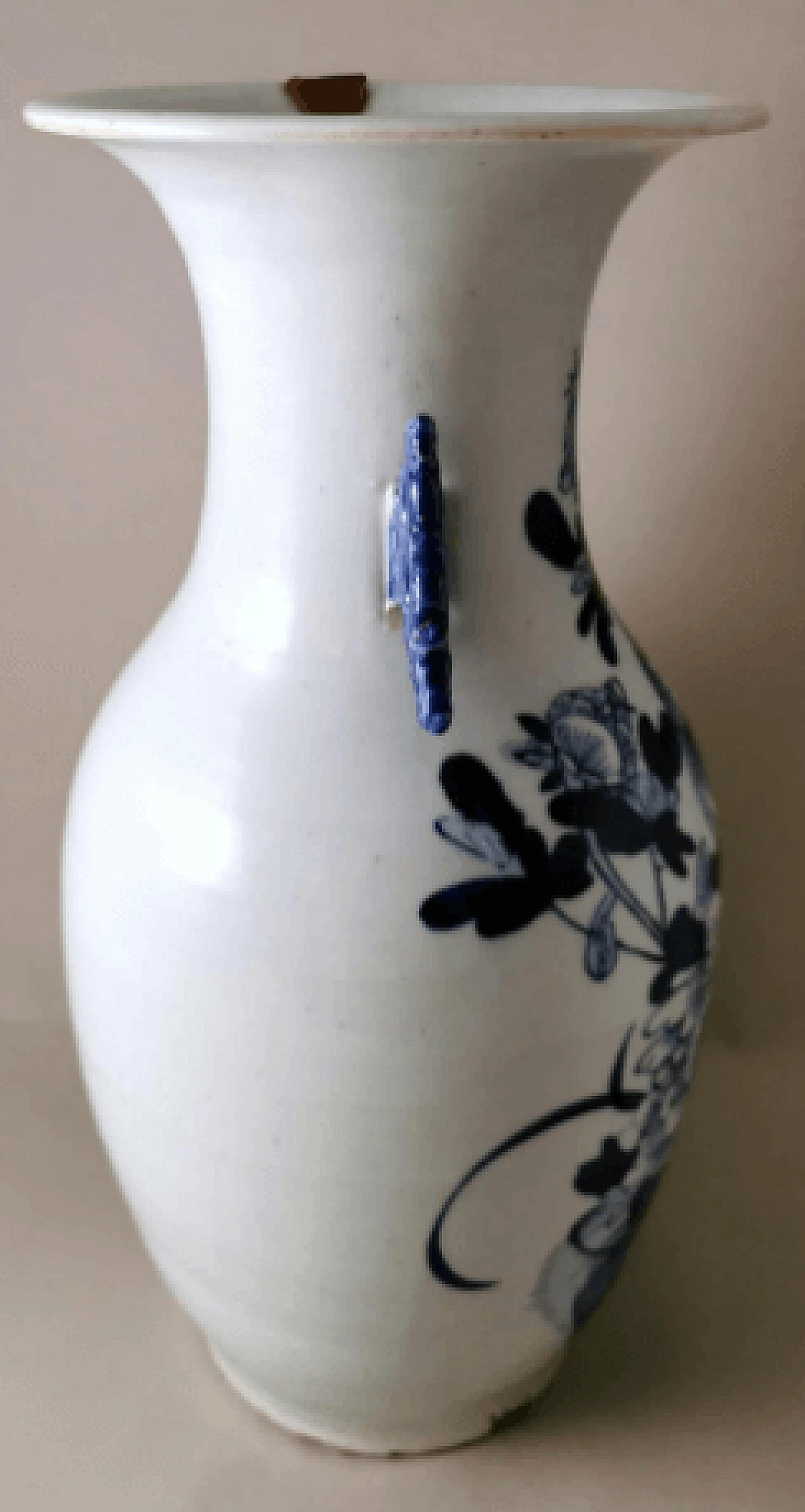
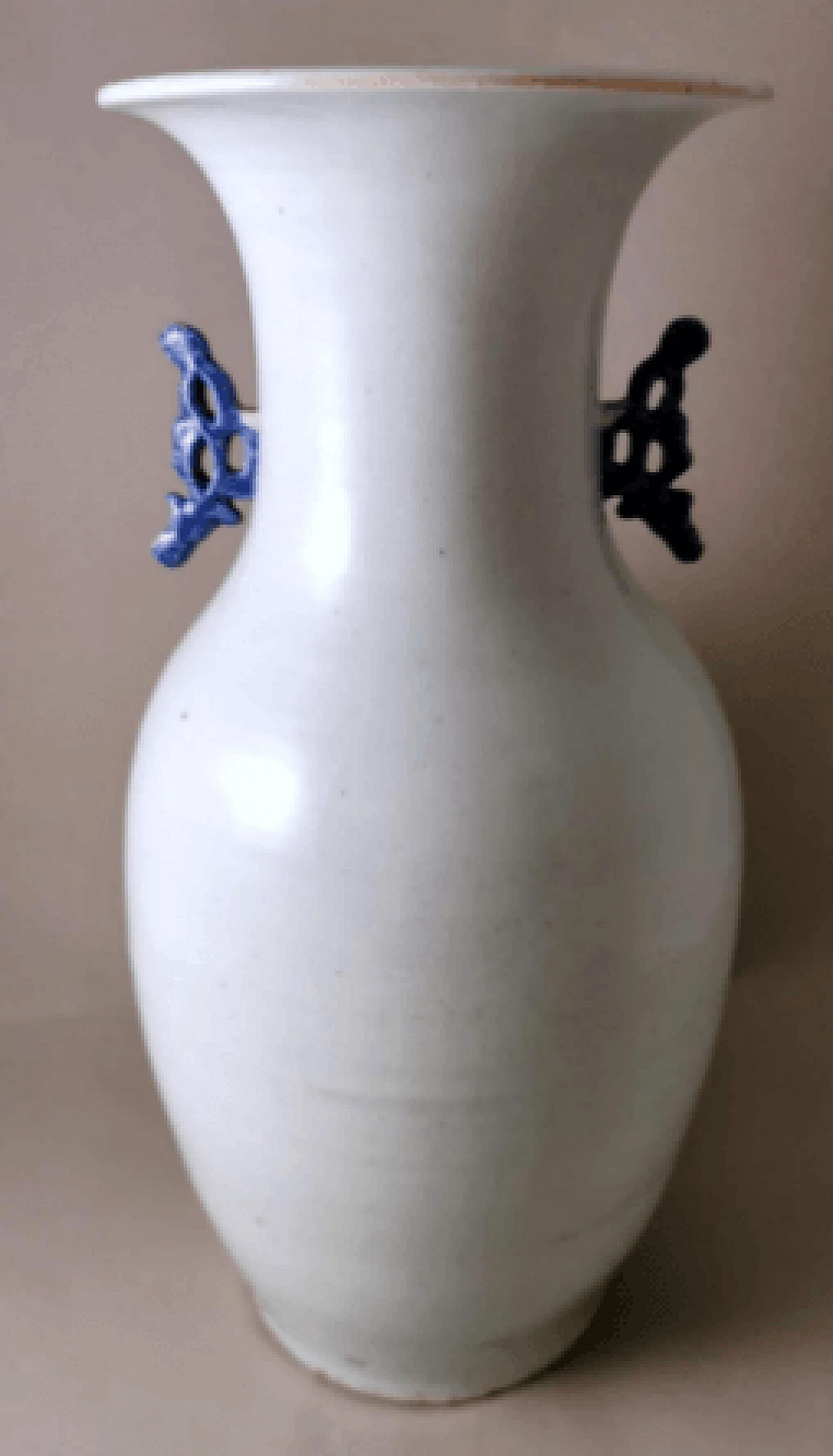
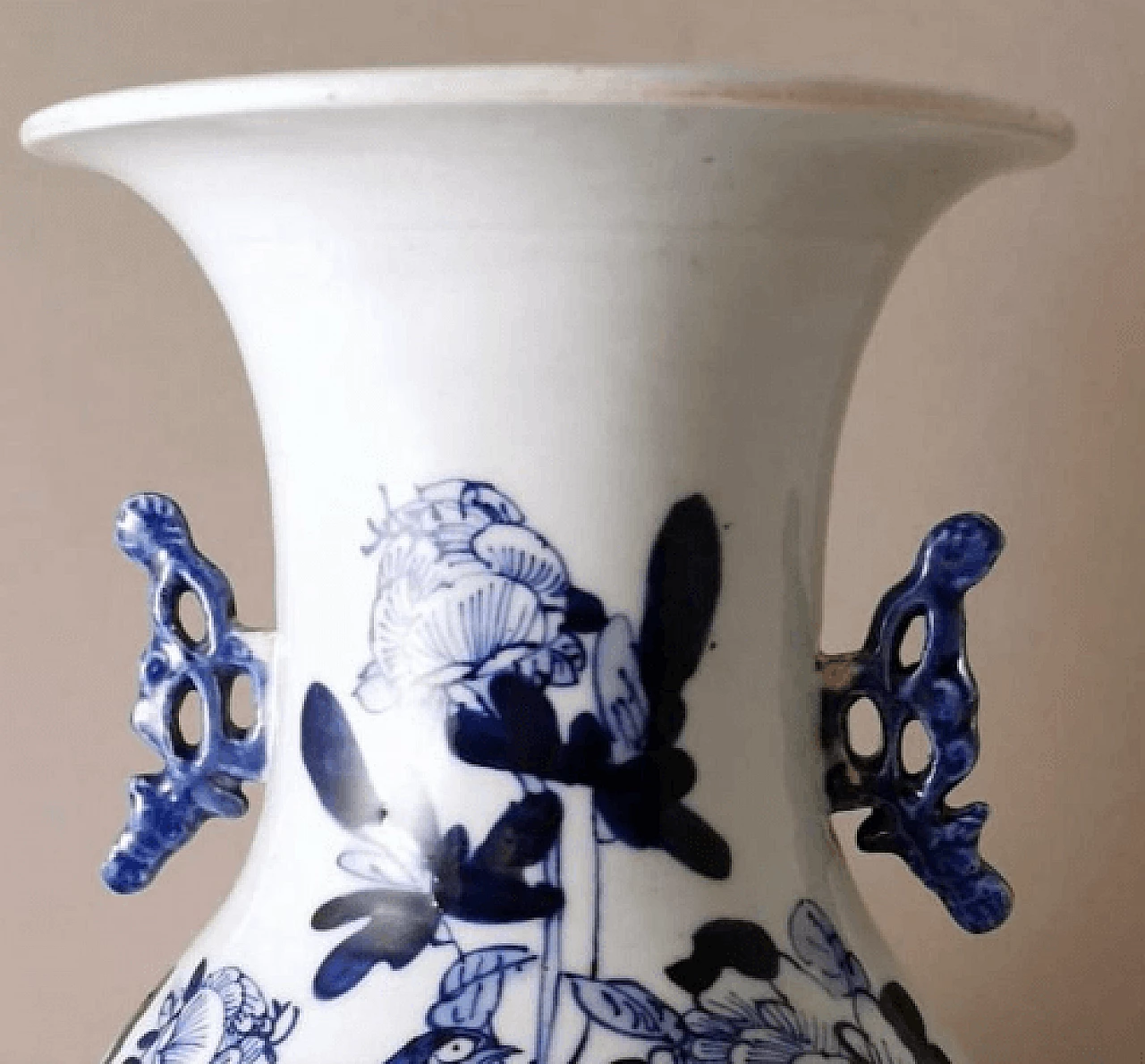
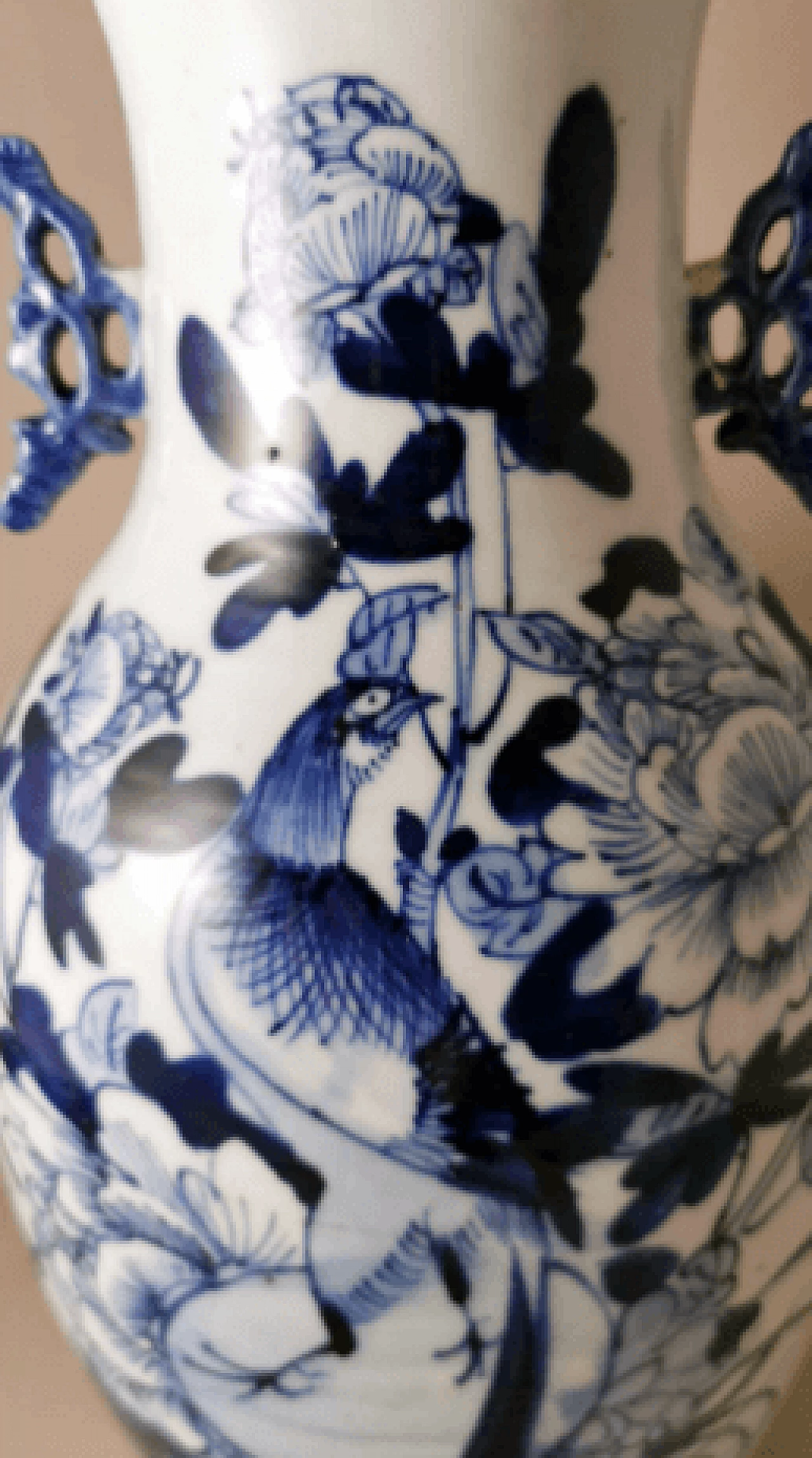
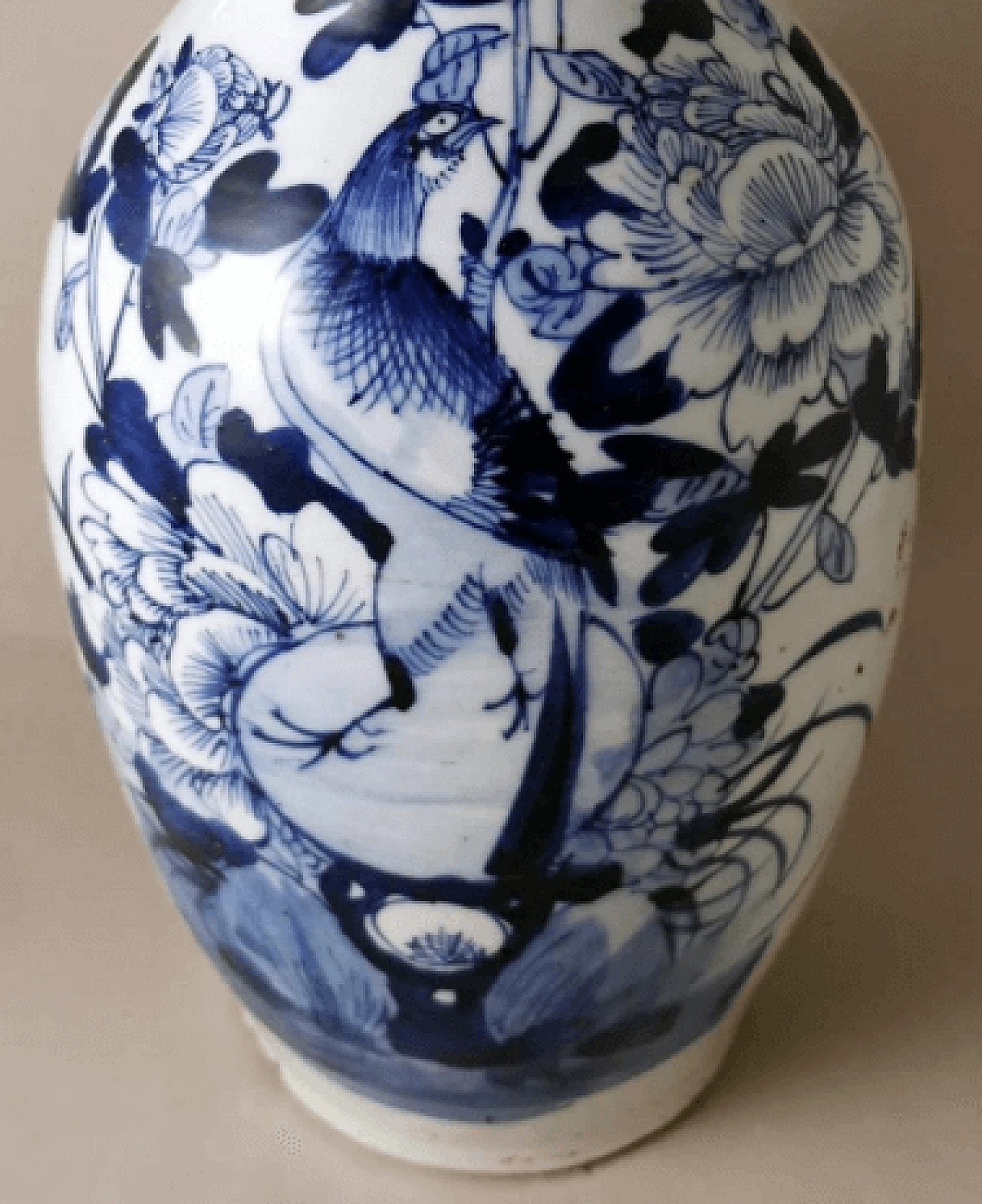
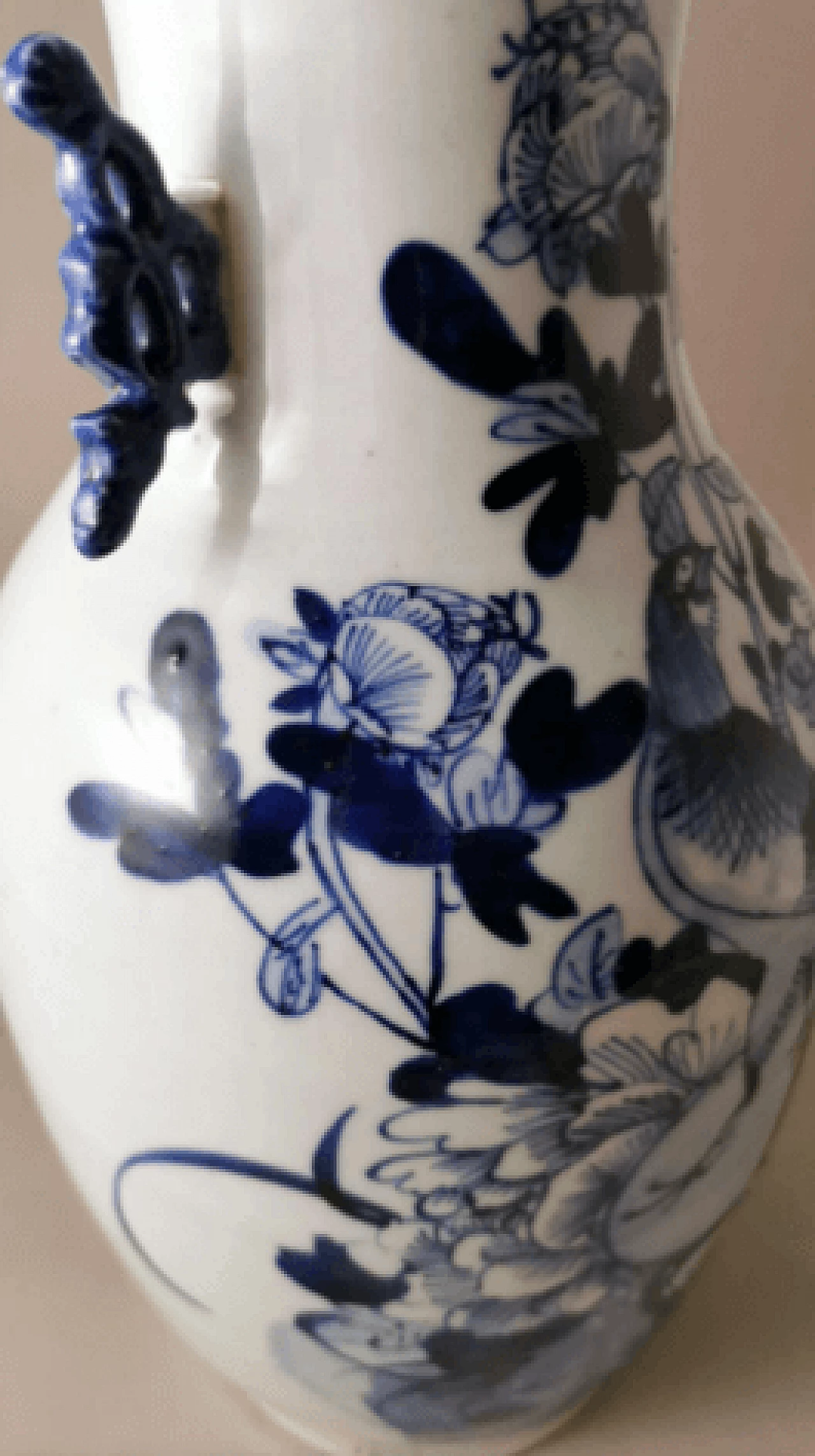
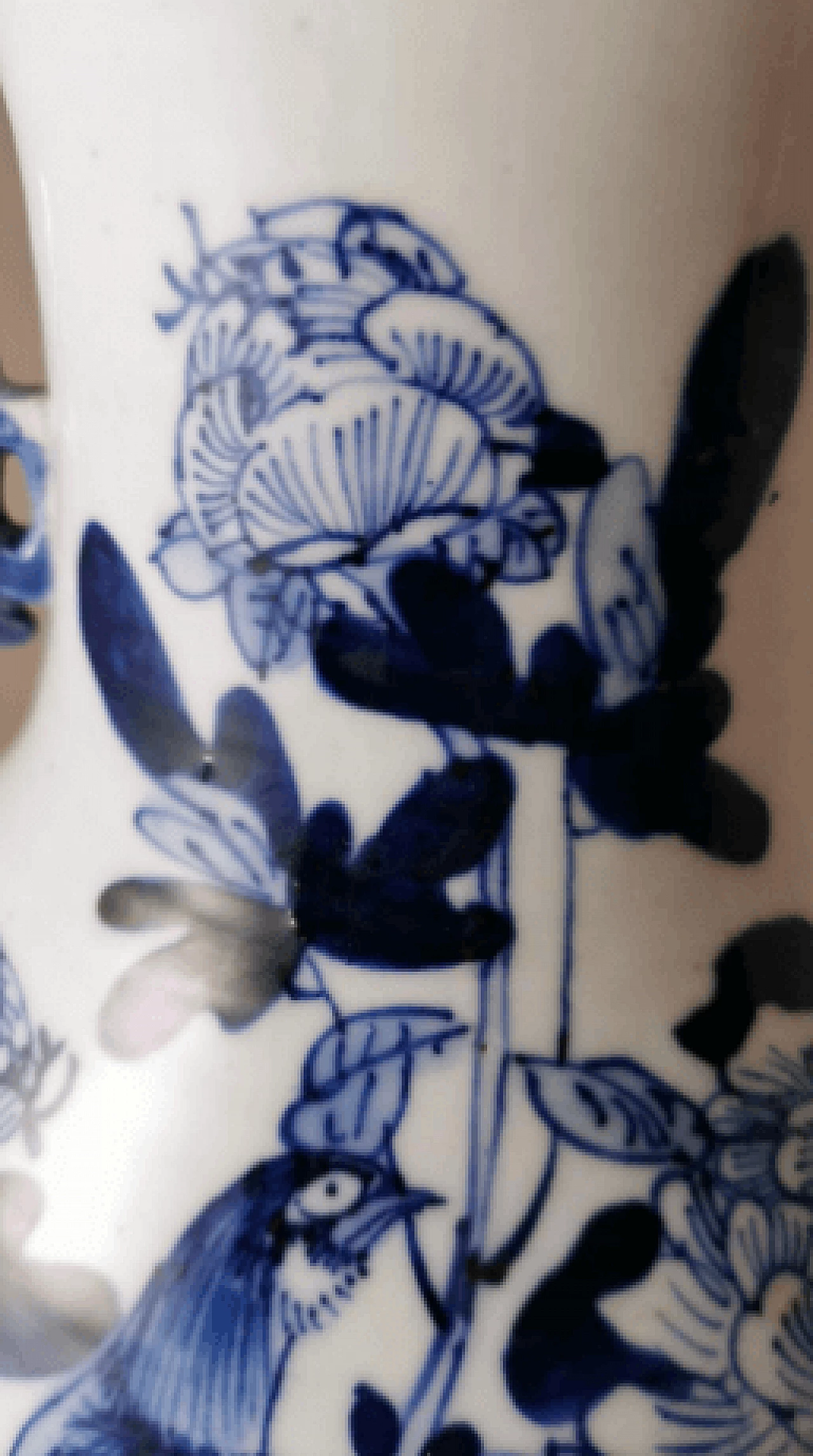
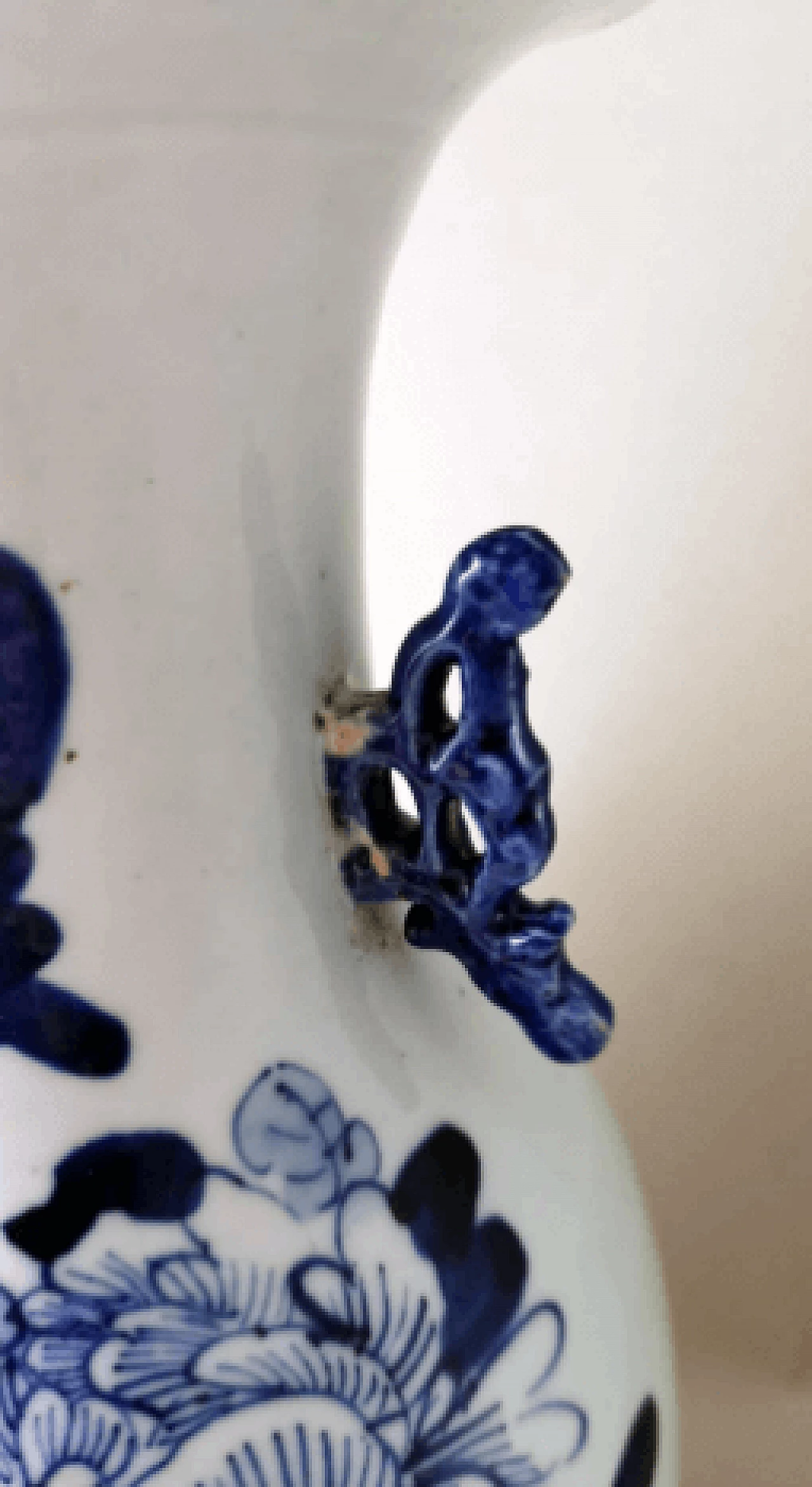
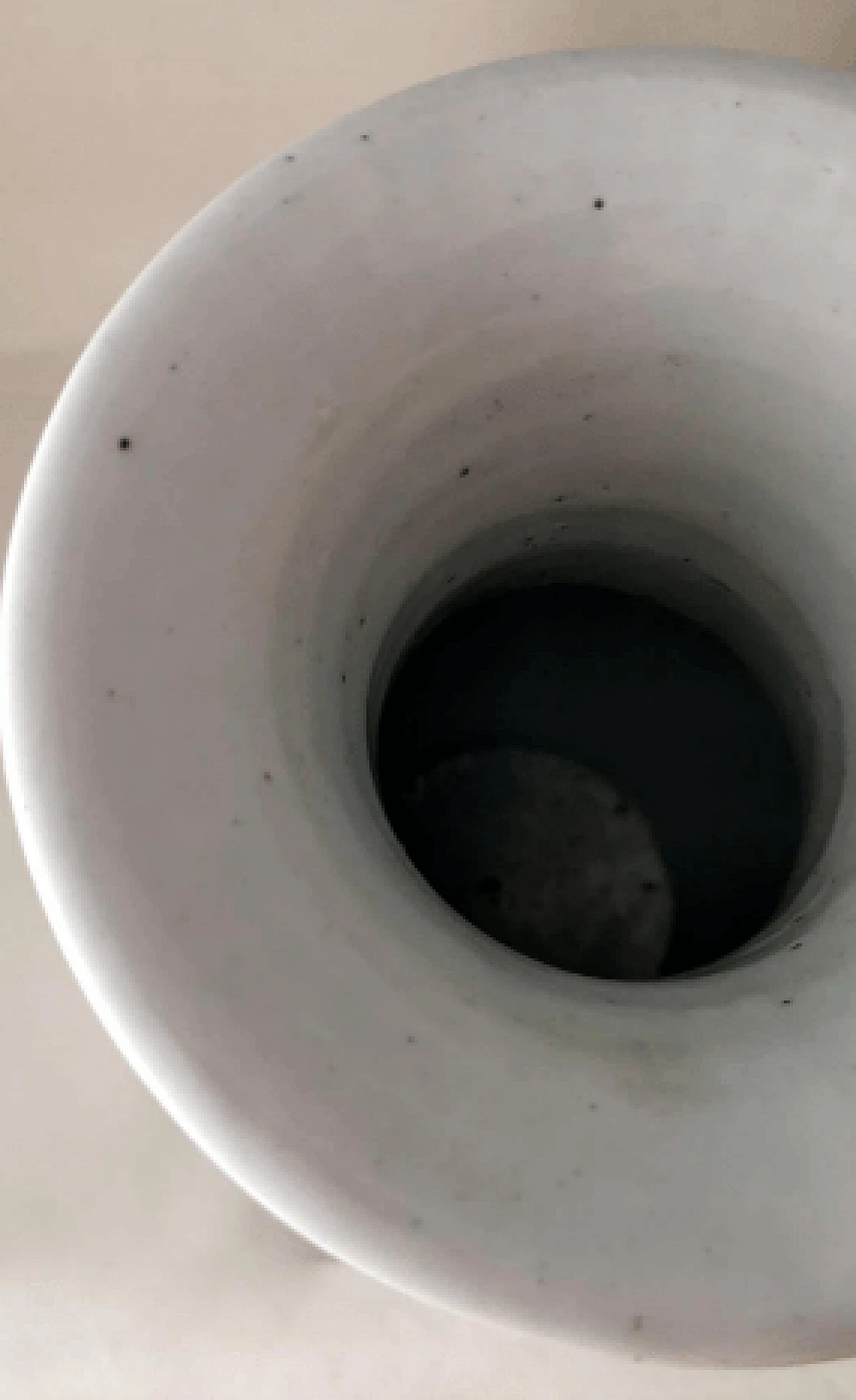
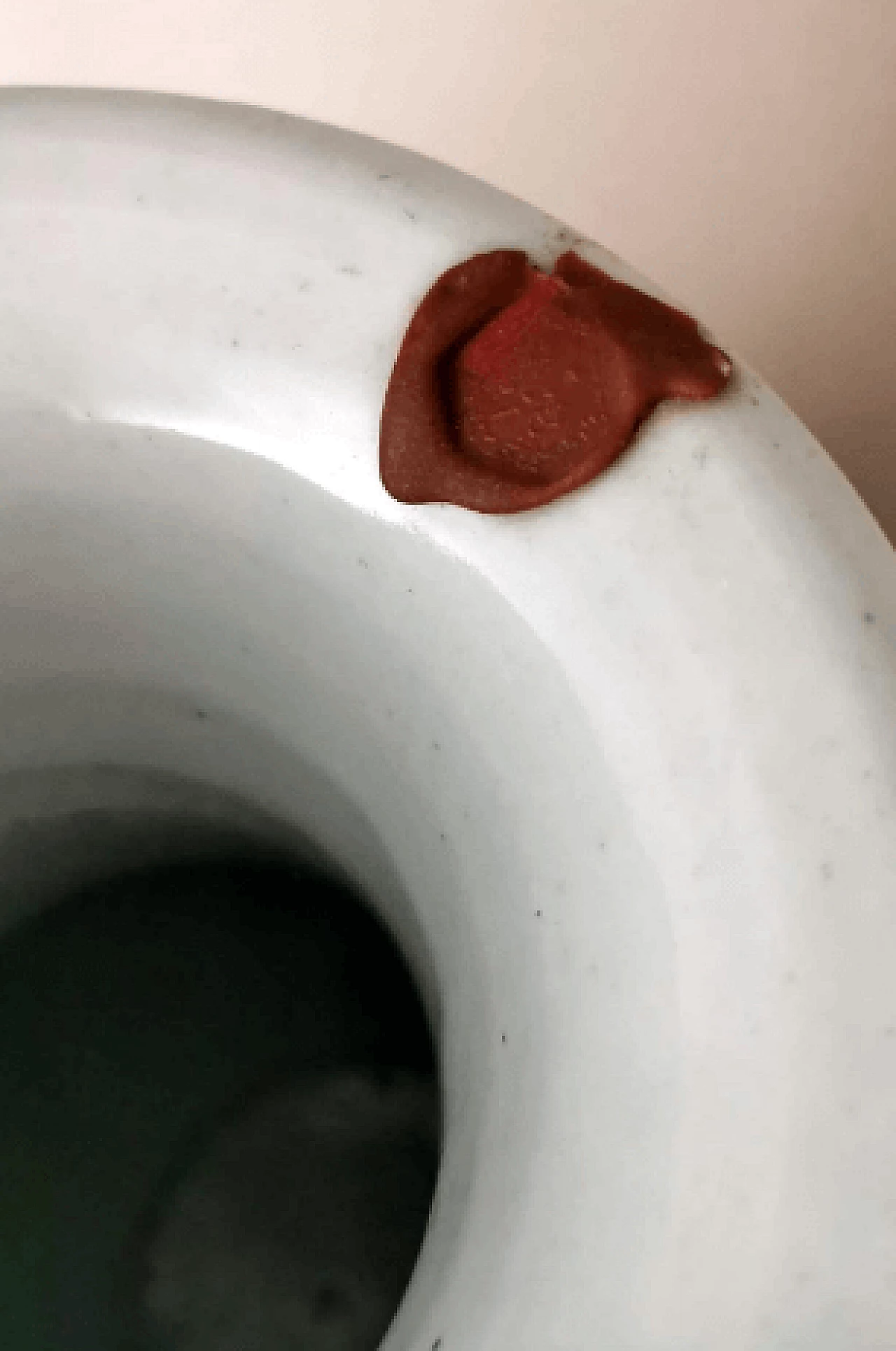
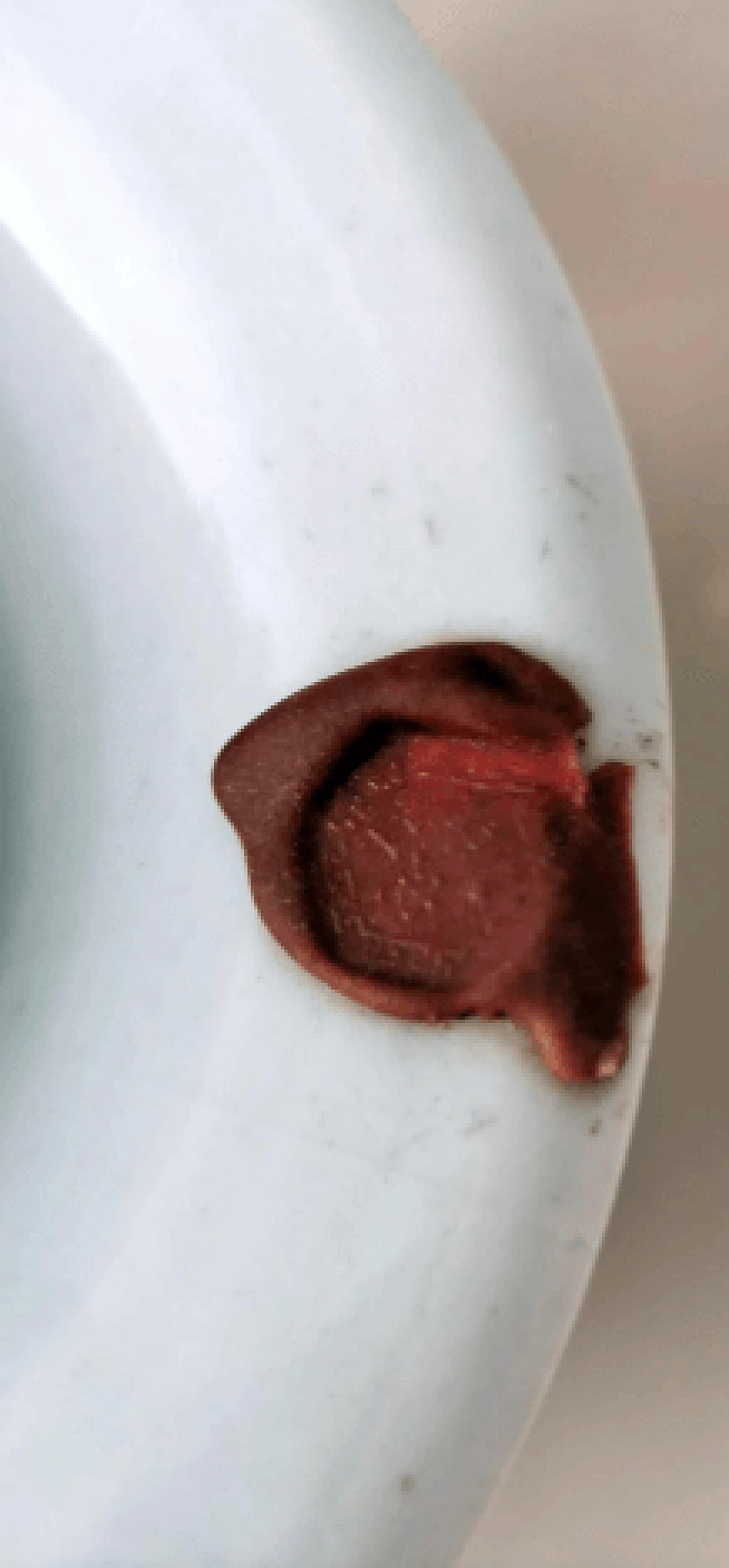
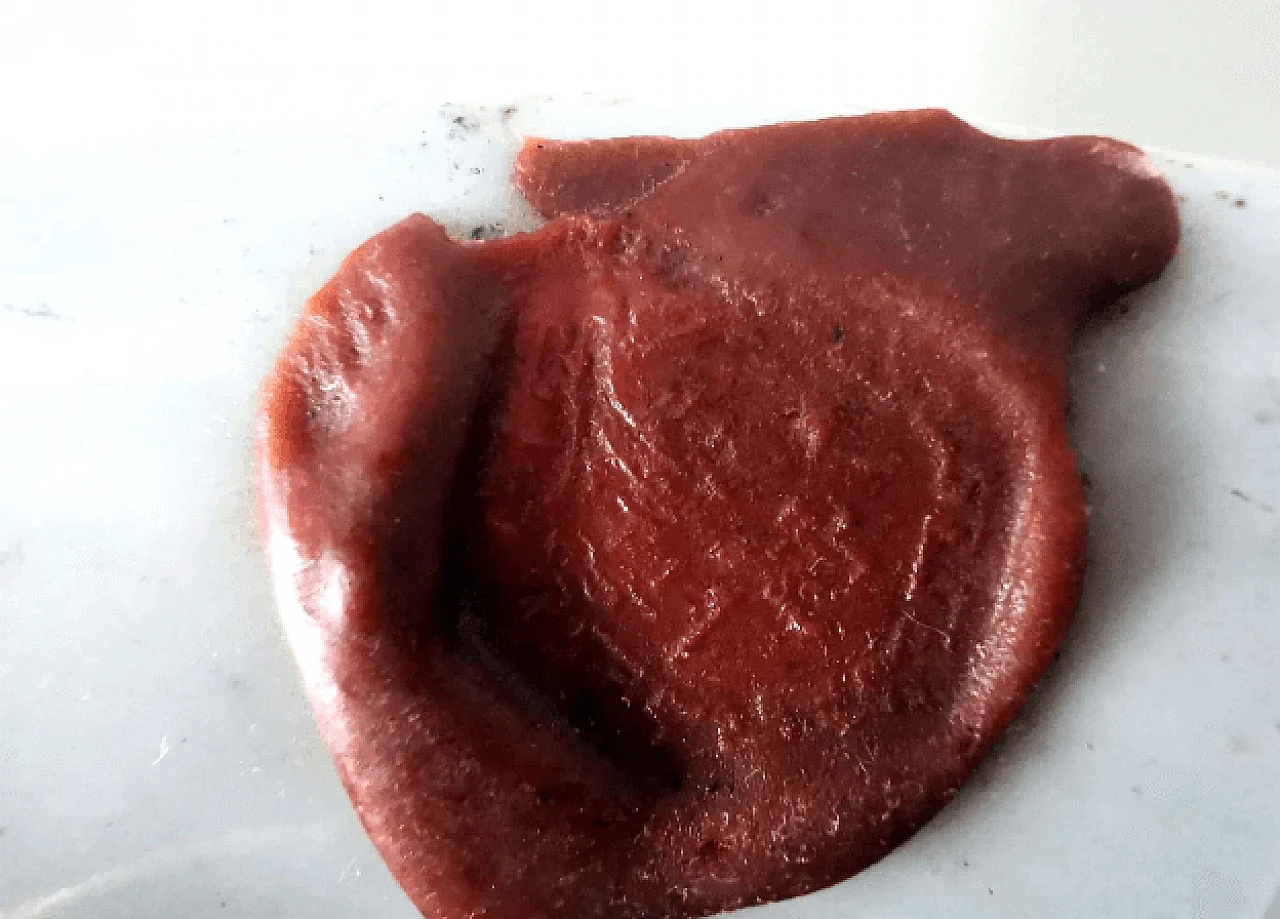
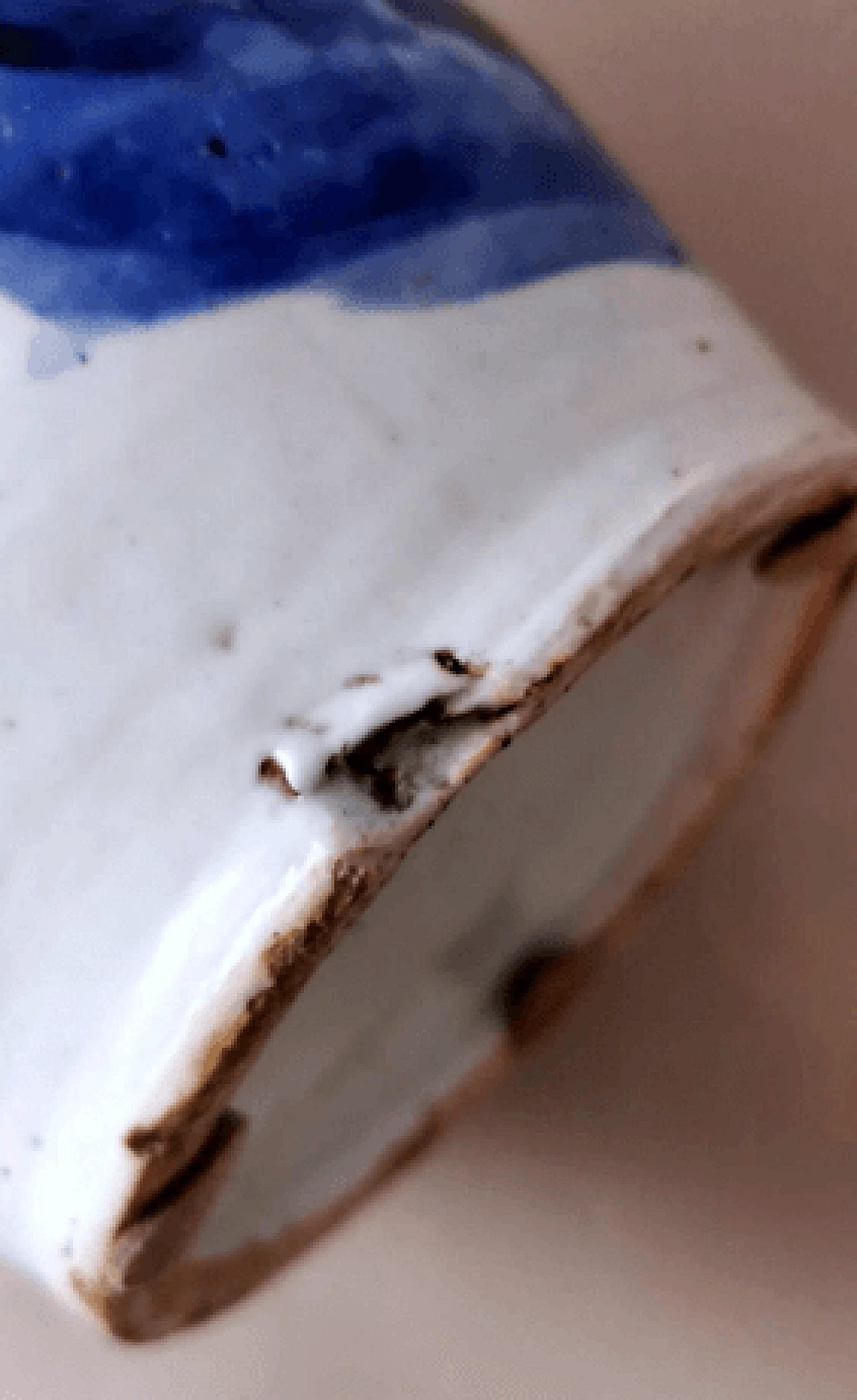
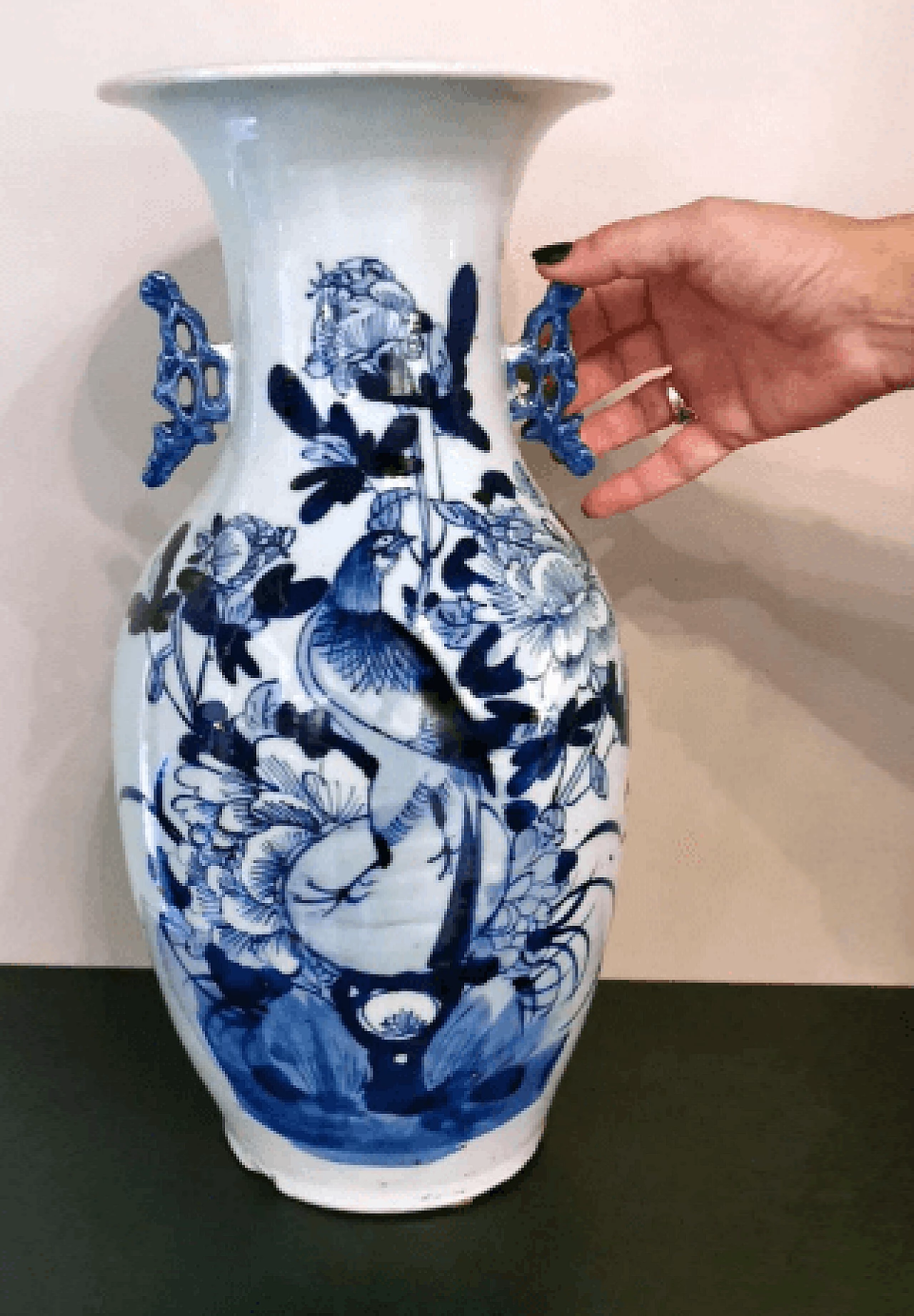
 SILVER Seller in Prato, Italy
SILVER Seller in Prato, Italy






.png)






